
Despite the maps in EA’s new shooter being about the same size as those in BF1, the scale of the two feels drastically different
The post Why <i>Battlefield 6</i> Maps Feel So Dang Tiny appeared first on Kotaku.


Despite the maps in EA’s new shooter being about the same size as those in BF1, the scale of the two feels drastically different
The post Why <i>Battlefield 6</i> Maps Feel So Dang Tiny appeared first on Kotaku.
If you’ve signed up for an Amazon Prime subscription in the last few years, you may have some cash coming your way. Amazon recently settled a lawsuit with the Federal Trade Commission (FTC) over deceptive enrollment and cancellation practices, including enrolling customers in Prime without their consent and making it difficult to cancel. The company is now set to pay out $1.5 billion in refunds to affected consumers.
Here’s who qualifies, and how to make sure you get your money.
Refunds will be paid out to select Amazon Prime subscribers in the U.S. In order to qualify, you must also meet the following criteria:
You signed up for your Prime account between June 23, 2019 and June 23, 2025.
You signed up through a “challenged enrollment flow” (the universal Prime decision page, shipping selection page, single page checkout, or Prime Video enrollment flow) OR you tried cancel your Prime subscription between the dates listed above and were unsuccessful.
You used no more than three Amazon Prime benefits in any 12-month period after enrolling.
If you signed up for Amazon Prime before or after this time frame, or via another enrollment flow, you aren’t covered by the settlement.
In most cases, you won’t need to take any action. If you are eligible, Amazon will automatically refund your Amazon Prime subscription fees by December 25, 2025—up to a maximum of $51.
Some Amazon Prime customers who don’t qualify for automatic refunds may still be able to claim some cash from the settlement. If you signed up through a challenged enrollment flow and used up to 10 Prime benefits in any 12-month period, you may receive a claims form from Amazon via email sometime in early 2026. You’ll need to complete your claim within 180 days to get a refund.
As Mashable notes, payouts could trickle down to other Amazon Prime customers if the full settlement isn’t exhausted in the first two phases—though these refunds are likely to come later.
The first test release of the Git 2.52 distributed revision control system is now available. As has been a common trend, Git 2.52 is making further preparations in anticipation of the big Git 3.0 milestone…

The CEO of the largest satellite company in the world just proposed a bold—and totally misguided—solution to the climate crisis.
On Monday, OpenAI announced it has signed a seven-year, $38 billion deal to buy cloud services from Amazon Web Services to power products like ChatGPT and Sora. It’s the company’s first big computing deal after a fundamental restructuring last week that gave OpenAI more operational and financial freedom from Microsoft.
The agreement gives OpenAI access to hundreds of thousands of Nvidia graphics processors to train and run its AI models. “Scaling frontier AI requires massive, reliable compute,” OpenAI CEO Sam Altman said in a statement. “Our partnership with AWS strengthens the broad compute ecosystem that will power this next era and bring advanced AI to everyone.”
OpenAI will reportedly use Amazon Web Services immediately, with all planned capacity set to come online by the end of 2026 and room to expand further in 2027 and beyond. Amazon plans to roll out hundreds of thousands of chips, including Nvidia’s GB200 and GB300 AI accelerators, in data clusters built to power ChatGPT’s responses, generate AI videos, and train OpenAI’s next wave of models.
An anonymous reader shares a report: arXiv, a preprint publication for academic research that has become particularly important for AI research, has announced it will no longer accept computer science articles and papers that haven’t been vetted by an academic journal or a conference. Why? A tide of AI slop has flooded the computer science category with low-effort papers that are “little more than annotated bibliographies, with no substantial discussion of open research issues,” according to a press release about the change.
arXiv has become a critical place for preprint and open access scientific research to be published. Many major scientific discoveries are published on arXiv before they finish the peer review process and are published in other, peer-reviewed journals. For that reason, it’s become an important place for new breaking discoveries and has become particularly important for research in fast-moving fields such as AI and machine learning (though there are also sometimes preprint, non-peer-reviewed papers there that get hyped but ultimately don’t pass peer review muster). The site is a repository of knowledge where academics upload PDFs of their latest research for public consumption. It publishes papers on physics, mathematics, biology, economics, statistics, and computer science and the research is vetted by moderators who are subject matter experts.
Read more of this story at Slashdot.

The SouljaGame Flip is just a Retroid Pocket Flip 2
The post SouljaBoy Is Selling Someone Else’s Retro Handhelds For As Much As A Switch 2: ‘He Does Not Have Permission’ appeared first on Kotaku.
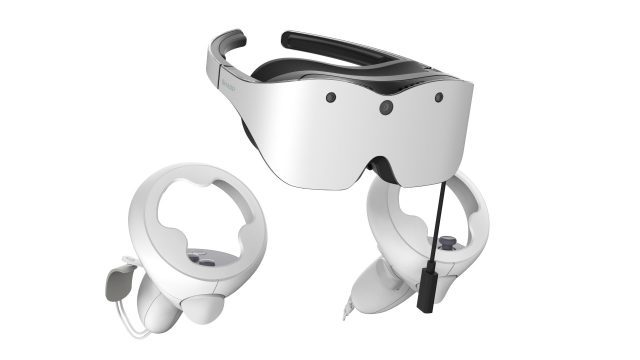
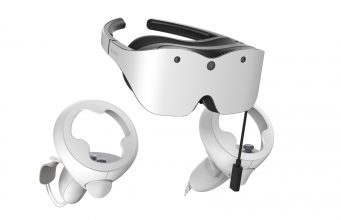
Sharp announced it’s launching a crowdfunding campaign for a slim and light PC VR headset in Japan, called Xrostella VR1.
Sharp first showed off a PC VR headset prototype at CES 2023, which was supposedly meant to ship sometime in 2024. It’s been nearly three years since we last heard about the headset, however during a recent Metaverse Expo in Japan, Sharp unveiled a newer version of the device, as demoed by Gizmodo Japan.
Now, Sharp says it’s slated to sell the device in Japan via crowdfunding platform Green Funding starting sometime in November, which it’s now dubbing ‘Xrostella VR1’.
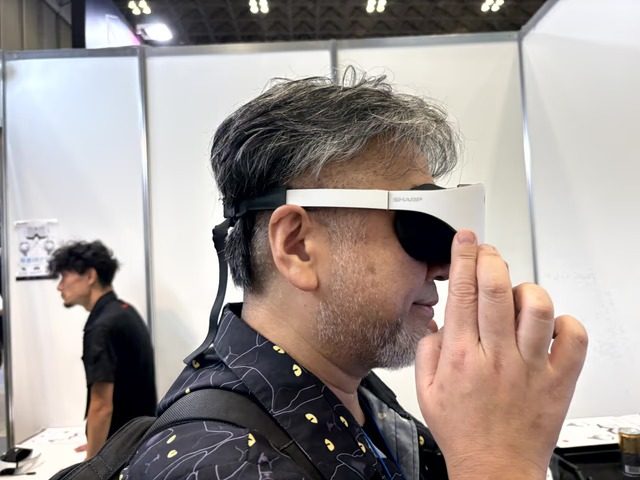
Xrostella VR1 connects to either a Windows 11 PC or a limited number of smartphones via a wired connection. The company has confirmed compatibility with Sharp’s AQUOS sense10, with more models soon to be revealed.
Weighing in at just 198g and sporting what Sharp calls in a Japanese language press statement a “glasses-like design,” the headset includes dual 2,160 × 2,160 per eye LCD displays clocked up to 90Hz.
It also makes use of “thin, light-efficient pancake lens,” providing a 90 degree field of view (FOV), and cameras for both inside-out 6DOF tracking and color passthrough.
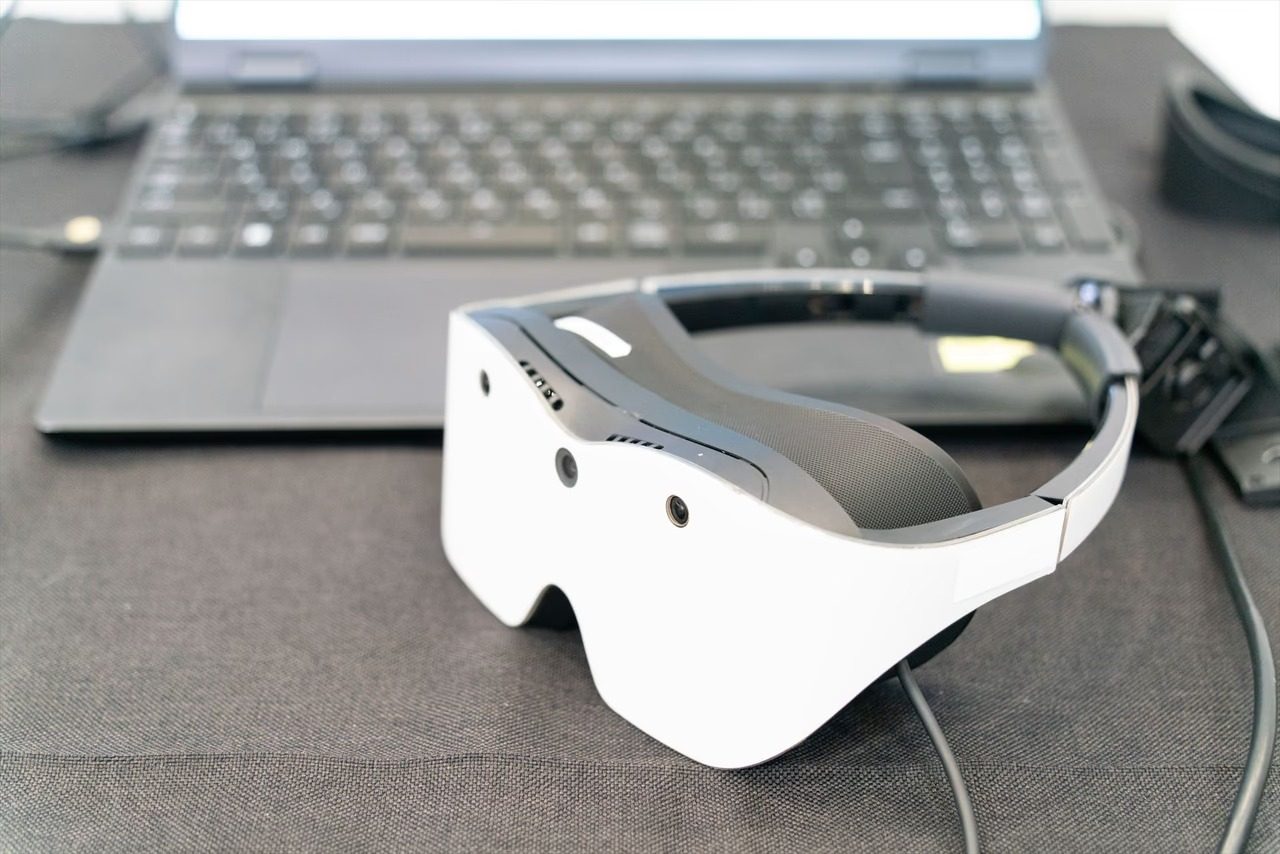
Included controllers appear to be a standard ‘Touch’-style affair that shipped with Quest 2 in 2020, replete with tracking rings, which comes in stark contrast to the company’s recent controller prototype, which combines standard button input with a unique haptic glove.
Additionally, Xrostella VR1 features a mechanism for adjusting the interpupillary distance (IPD) and diopter from 0D to -9.0D, which will allow nearsighted users to wear without needing glasses.
Pricing has yet to be confirmed, however Gizmodo Japan speculates it could be “more expensive than the Meta Quest 3,” which is priced at ¥81,400 (~$530 USD).
If you saw the specs and did a double take, you’re not alone. While having independent diopter adjustments is cool, it’s a shame Sharp is going so weak in the display department, as it essentially delivers a resolution only slightly higher than Quest 3.
And while the form factor is interesting on paper, I have my doubts that ~198g will weigh lightly on the bridge of your nose without having some sort of strap you can crank down, or otherwise better distribute weight for longer sessions—making its ‘glasses’ form factor more akin to headset with rigid, non-configurable straps. It all smacks of an aging headset design, recalling devices like HTC Vive Flow (2021), which feels remarkably heavy on the face, even at 189g.
Granted, marketing images don’t show the buckled strap system seen below, so there’s no telling what it will ship with. But the fact the company was demoing with the strap tells me everything I need to know about just how front-heavy it will be.

Still, it may not be as ‘DOA’ as you might think despite the thin and light PC VR segment growing to include a bevy of devices: Bigscreen Beyond 2 ($1,020), Pimax’s Dream Air SE ($900 – $1,200) coming December, and fellow Japanese brand Shiftall, which is releasing its latest MeganeX PC VR headset in December too for $1,900. It could be significantly cheaper if it were closer to Quest 3 in price, which would be really interesting to watch.
That said, Sharp’s VR headset is likely going to be a Japan-only device, which means the company will probably be leaning hard on the fact that it’s being produced and serviced domestically—regardless of price.
While mostly known for televisions and home applainces in the West, Sharp actually holds a significant slice of the smartphone market share in Japan. Despite foreign brands like Samsung and Google making recent headway in the country, Sharp remains a trusted name that Japanese consumers may simply feel more comfortable dealing with.
The post Sharp is Crowdfunding a Slim & Light PC VR Headset in Japan That Feels Positively Retro appeared first on Road to VR.

You should still pack carefully, but rest assured encountering a hacker won’t be a total loss
The post <i>Arc Raiders</i> Devs Are Refunding Loot Lost To Cheaters appeared first on Kotaku.
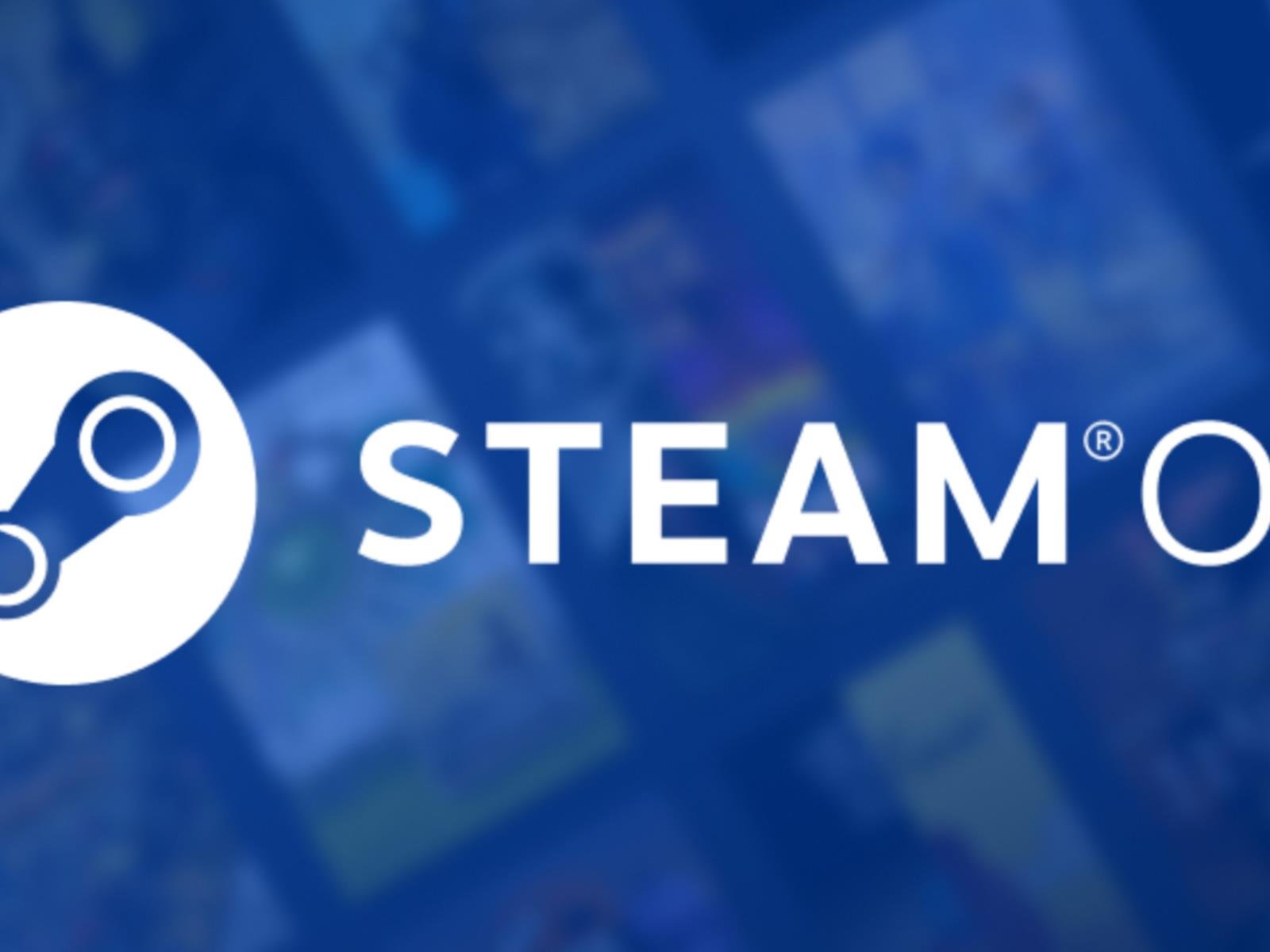
As one would expect, the majority of this adoption is in the form of SteamOS, which now comprises

Speaking on a recent episode of Joe Rogan’s podcast, Musk declared that the
In recent weeks, copies of an intriguing policy document have started to spread among space lobbyists on Capitol Hill in Washington, DC. The document bears the title “Athena,” and it purports to summarize the actions that private astronaut Jared Isaacman would have taken, were his nomination to become NASA administrator confirmed.
The 62-page plan is notable both for the ideas to remake NASA that it espouses as well as the manner in which it has been leaked to the space community.
After receiving a copy of this plan from an industry official, I spoke with multiple sources over the weekend to understand what is happening. Based upon this reporting there are clearly multiple layers to the story, which I want to unpack.

One person ran the numbers and figured out that EA’s latest shooter has some of the smallest maps in the series
The post <i>Battlefield 6</i> Data Reveals How Small Its Maps Are Compared To Past Games appeared first on Kotaku.
Palantir launched a fellowship that recruited high school graduates directly into full-time work, bypassing college entirely. The company received more than 500 applications and selected 22 for the inaugural class. The four-month program began with seminars on Western civilization, U.S. history, and leaders including Abraham Lincoln and Winston Churchill. Fellows then embedded in client teams working on live projects for hospitals, insurance companies, defense contractors, and government agencies.
CEO Alex Karp, who studied at Haverford and Stanford, said in August that hiring university students now means hiring people engaged in “platitudes.” The program wraps up in November. Palantir executives said they had a clear sense by the third or fourth week of which fellows were succeeding in the company environment. Fellows who perform well will receive offers for permanent positions without college degrees.
Read more of this story at Slashdot.
Flatpak 1.17 is out today as the newest feature release for this Linux app sandboxing/distribution tech. Flatpak 1.17 brings a number of exciting new features…
It’s been four days since Disney’s channels disappeared from YouTube TV, and some subscribers are receiving a surprise hidden away in their account settings: Over on Reddit, there are reports that some users are able to claim $10 credits on their next six monthly bills, though it’s not entirely clear if this is intended as a make-good for the streamer’s Disney troubles.
The credit doesn’t seem to be showing up for everyone, but has been redeemed by YouTube TV subscribers at Tom’s Guide. Google has yet to make any announcements about the credit, and that based on a post to the YouTube X account, it appears to be entirely separate from the $20 credit the company previously promised subscribers if Disney channels remain off YouTube TV for an extended period. (That particular credit is apparently still pending, with YouTube telling subscribers to expect “an email with more details in the coming days.”)
It’s possible that the $10 credit is entirely unrelated to the Disney debacle, although the timing is suspect, and this isn’t the first time a mysterious credit has popped up for YouTube TV subscribers after a public controversy—9to5Google writer Ben Schoon wrote about claiming a similar credit back in June, after YouTube TV raised its prices.
Regardless of the reasons behind it, here’s how to check if you’re eligible for the new $10 YouTube TV credit on your own account, and how to claim it on your next six bills (a total savings of $60).
According to the Reddit users as well as Schoon’s reporting from the last time this happened, you can only claim the credit through a web browser on a desktop or laptop computer, which might explain why some users aren’t seeing it.
Using said desktop browser, log into your YouTube TV account, click on your profile picture in the top-right corner, and click on Settings. Click on Membership, and finally Manage. If you’re eligible for the discount, you’ll see it here. Click Redeem to claim it.
Note, again, that even when you follow these steps, you may not see the discount, at least judging by reports from the Reddit community. Currently, it’s unclear how it’s being distributed. I’ve reached out to Google for more details and will update this post when I hear back.
If you don’t see an offer to claim the new $10 credit on your YouTube TV account, you’re not totally out of luck: Per YouTube’s post to its X account, a $20 credit is currently being planned if Disney’s channels don’t return to the service soon. The company said it will send out emails with more details shortly, so keep an eye on your inbox for info on how to claim it. It’s possible those emails may also have more clarification about this $10 credit, which could help those who aren’t seeing it redeem it as well.

Players found a way to shiny hunt six Alpha Pokémon at once
The post <em>Pokémon Legends: Z-A</em> Fans Have Discovered One Of The Most Elaborate Shiny-Hunting Exploits I’ve Ever Seen appeared first on Kotaku.

S.T.A.L.K.E.R. 2: Heart of Chornobyl is leaving just a year after launch
The post A Surprise Departure Shows The Problem With The Game Pass ‘Backlog’ appeared first on Kotaku.
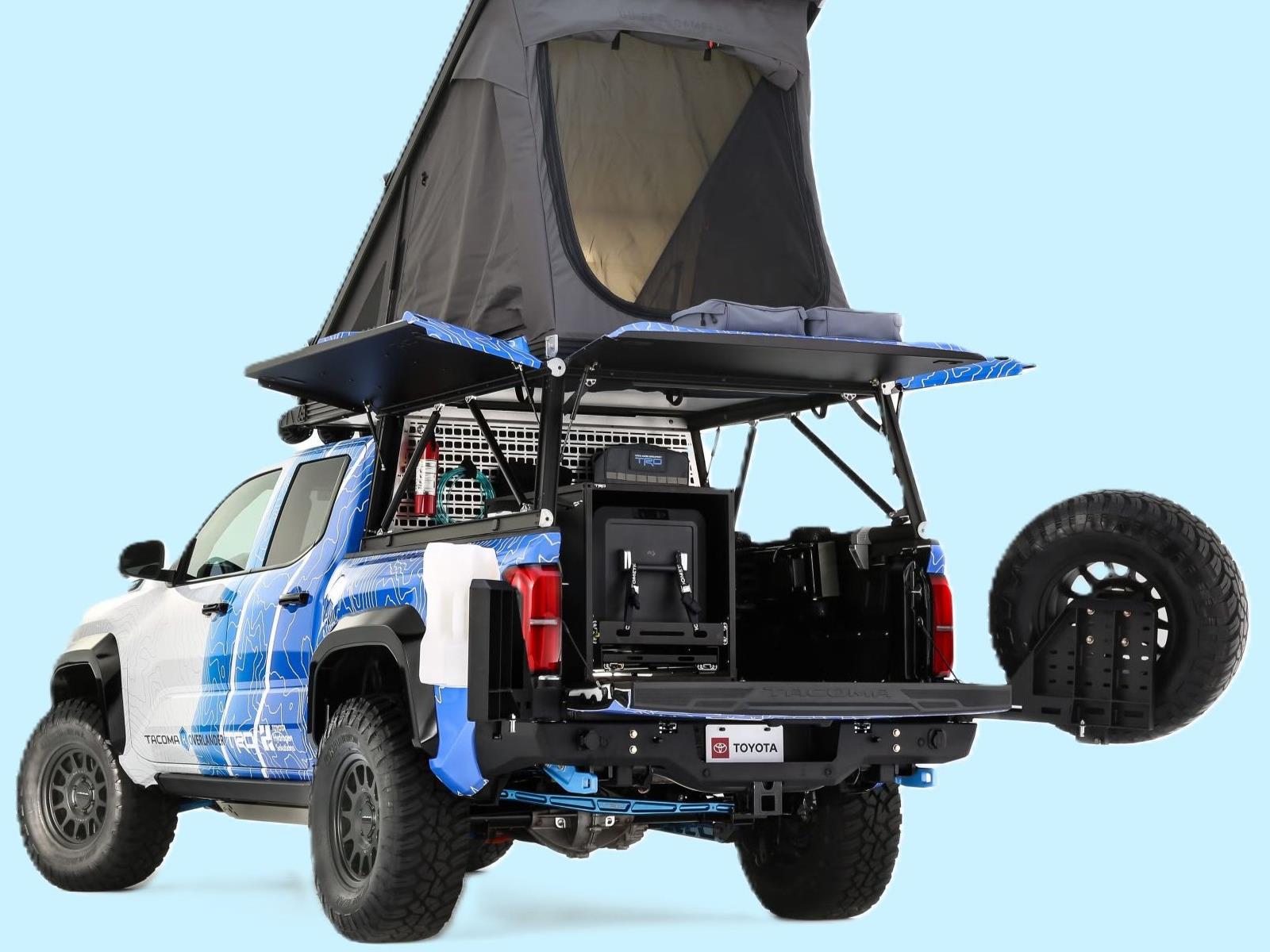
Microsoft AI chief Mustafa Suleyman says only biological beings are capable of consciousness, and that developers and researchers should stop pursuing projects that suggest otherwise. From a report: “I don’t think that is work that people should be doing,” Suleyman told CNBC in an interview this week at the AfroTech Conference in Houston, where he was among the keynote speakers. “If you ask the wrong question, you end up with the wrong answer. I think it’s totally the wrong question.”
Suleyman, Microsoft’s top executive working on artificial intelligence, has been one of the leading voices in the rapidly emerging field to speak out against the prospect of seemingly conscious AI, or AI services that can convince humans they’re capable of suffering.
Read more of this story at Slashdot.